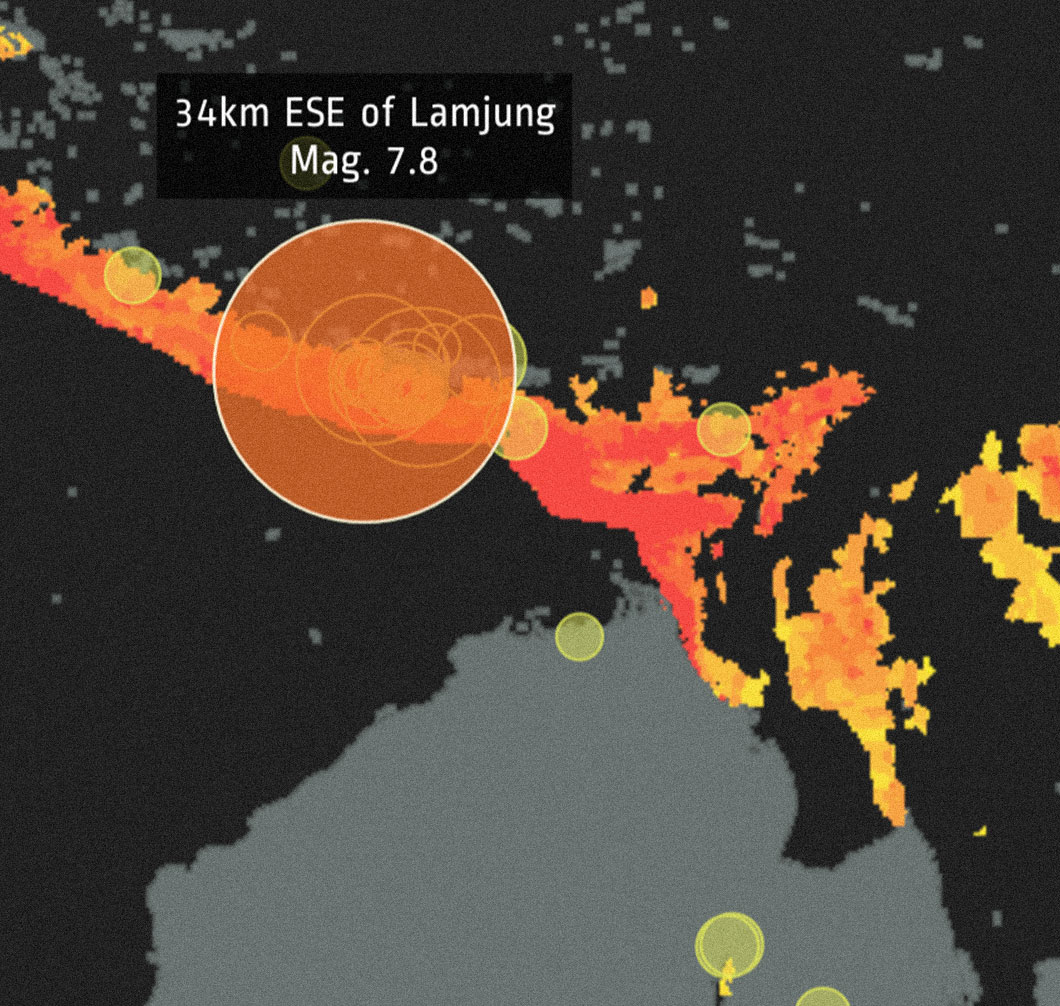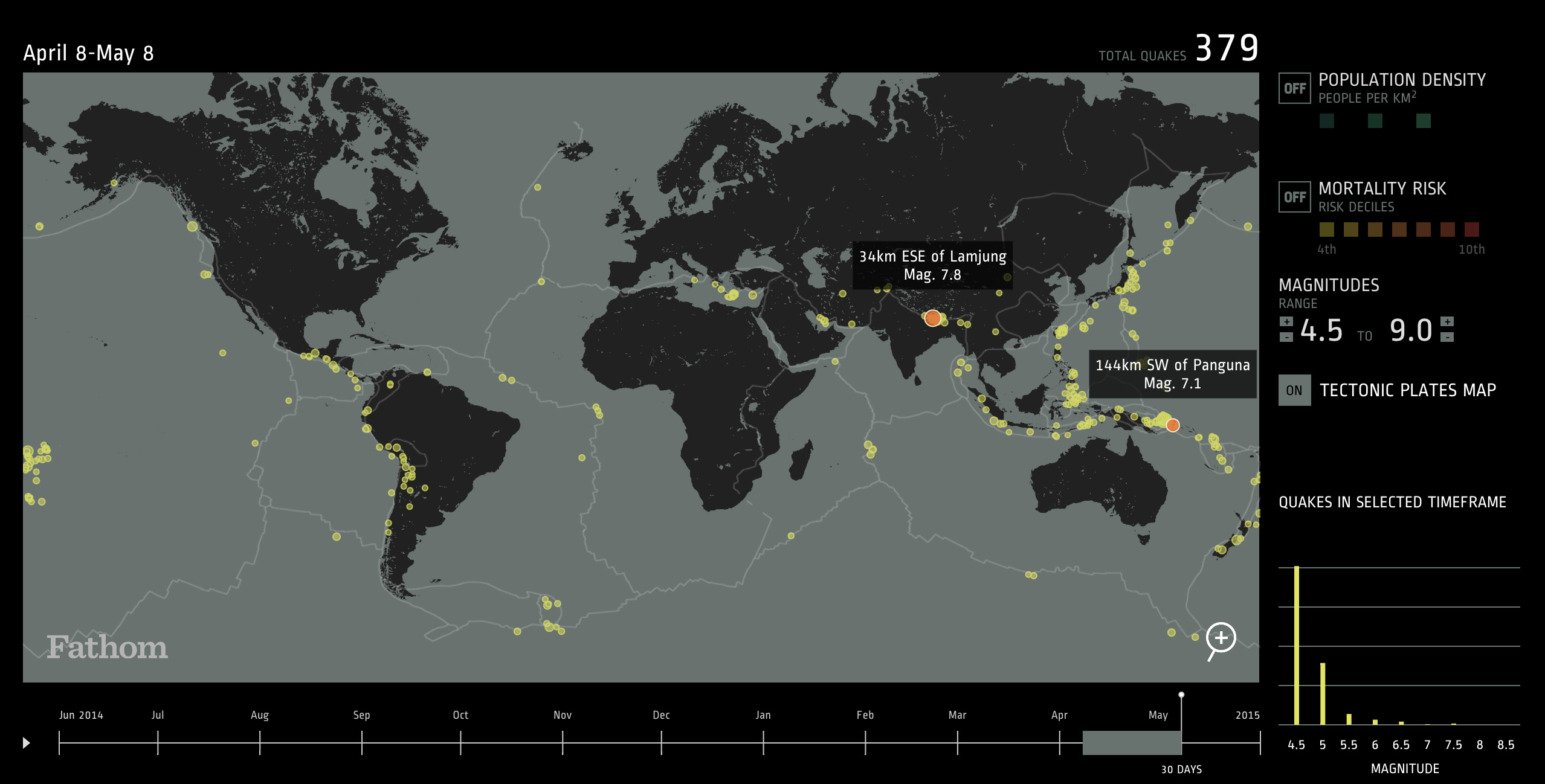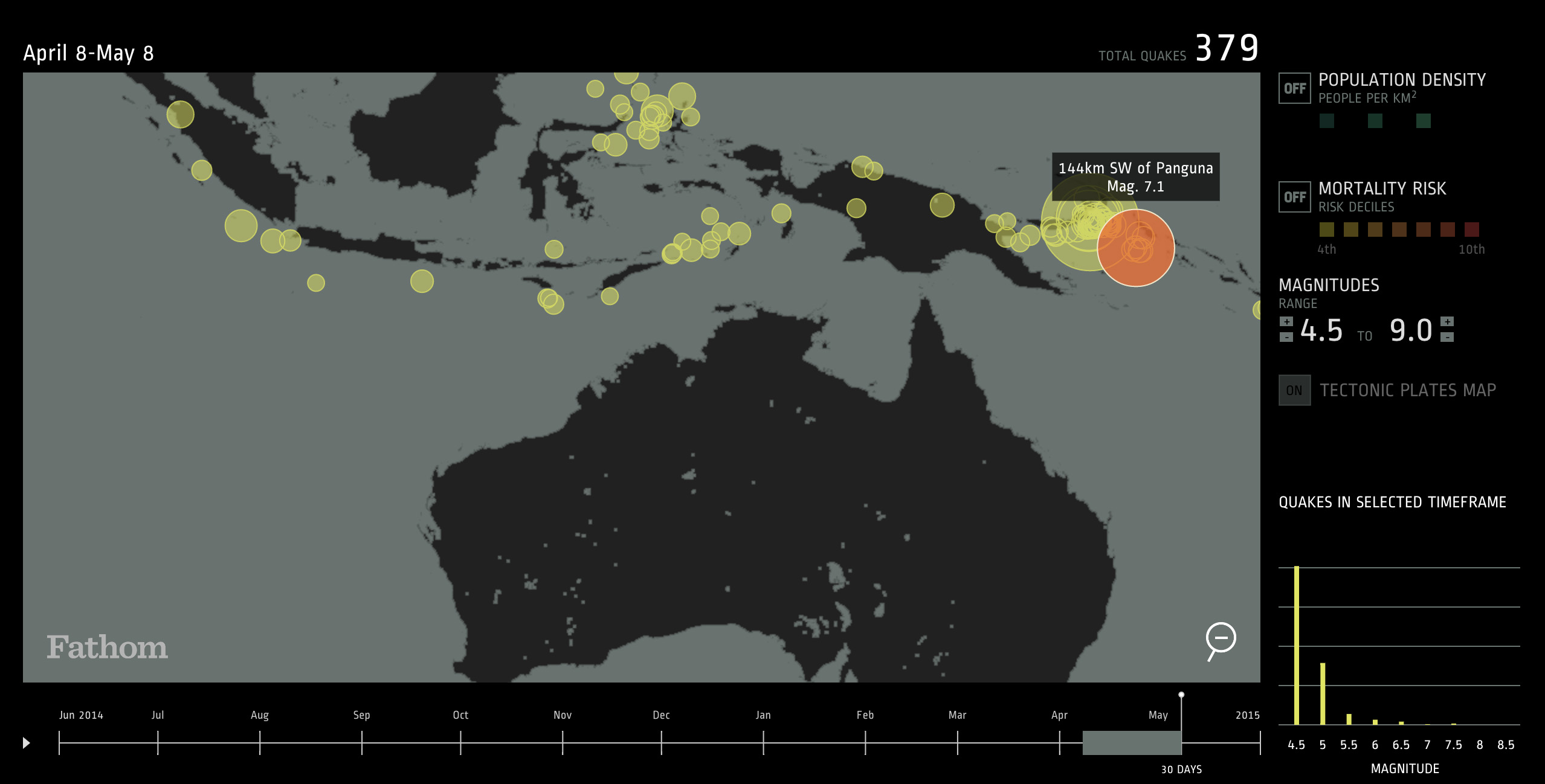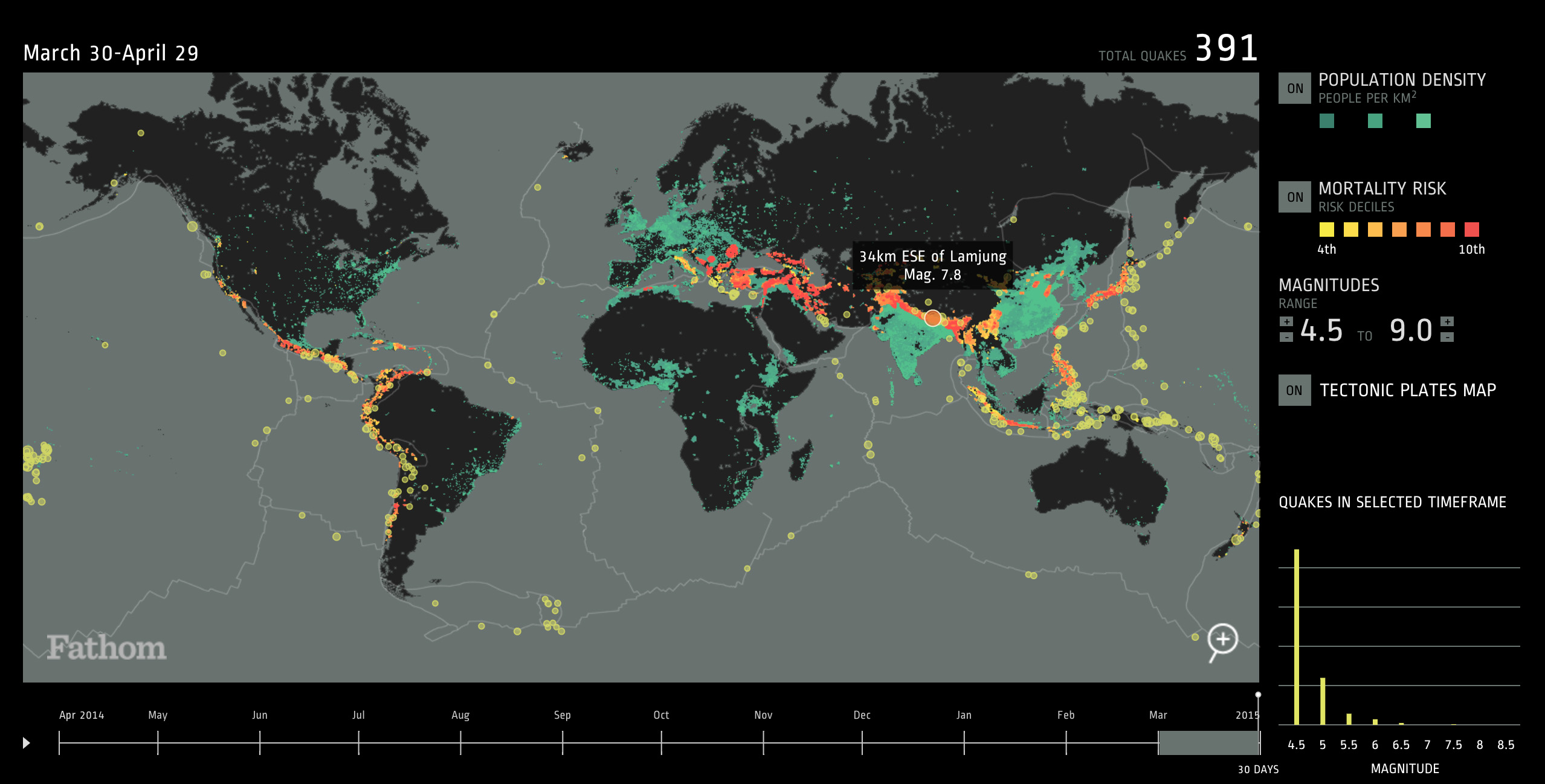

Please consider donating to local and international relief efforts.
Many of the world’s most densely populated areas sit along the most seismically risky locations. The Nepal earthquake was triggered by the release of escalating tension along major fault lines, where the plate containing most of Europe and Asia overrode the subducting India plate. The Nepalese capital of Kathmandu, home to more than one million people, sits just 48 miles southeast of the earthquake’s epicenter.



There have been four magnitude 6 earthquakes along the boundary of the India and Eurasia plates in the last century. In the last month alone, there have been 379 earthquakes between magnitude 4.5-9.0 around the world.
Our web application demonstrates that the most densely populated areas are often at the greatest risk for high magnitude earthquakes. Many of these high-risk regions require improved infrastructure that can sustain the frequenting tremors.

We hope our tool can act as a guide as to where we can focus future efforts to improve infrastructural and institutional preparedness. Please take the time to learn more, and support the international aid efforts where possible.